In Harmony with nature. 5 Medieval Monasteries of Dilijan National Park
The Tavush region is famous not only for its amazing nature, but also for its rich cultural, historical, and architectural heritage. Around the city of Dilijan, in the heart of the forest, residents built 5 monasteries that date back to the era of early Christianity and the high Middle Ages. During this period, Armenian architecture reached its apogee, both in terms of aesthetics and building structures.
The monastery complexes were the most important spiritual and educational centers of medieval Armenia. In addition, they also had a defensive function. Here people used to hide from the invaders and keep valuable manuscripts and food supplies.
These monuments are a clear specimen of a harmonious combination of man-made and natural, architecture and majestic nature.
Haghartsin monastery complex
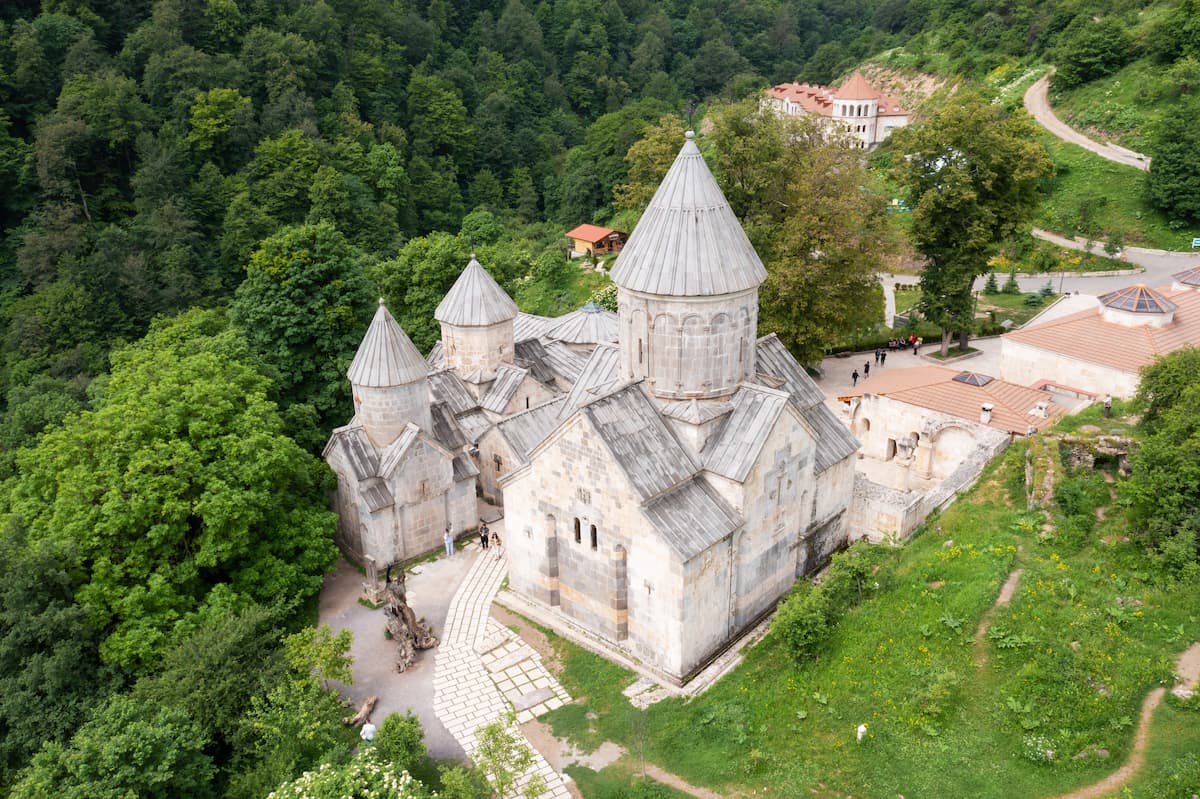
Haghartsin is one of the most important historical and cultural attractions not only in the Tavush region but in Armenia. This is the largest monastery complex in the Dilijan National Park. It is located 12 km east of Dilijan in a picturesque forested gorge, near the village of the same name.
The exact date of the foundation of the monastery complex has not been determined. Currently, the complex includes 4 churches (St. Gregory, St. Stepanos, St. Mother of God, and the Church of Katoghike), built in different historical periods, two narthexes, and a refectory. It is believed that the oldest building of the complex, the Church of St. Gregory, was built in the XI century. It’s built of roughly processed yellow limestone and is a cross-domed structure.
The Church of St. Stepanos is a few meters east of the Church of St. Gregory (dating from 1244). It’s a small building of blue basalt, it’s not distinguished by an excess of details, except for the sundial on the south facade and narrow ornamented windows in the center of the walls and tromps.
The main church of the monastery complex is the Church of the Holy Mother of God (Surb Astvatsatsin). It is located in the northern part of the complex, somehow detached from the complex.
According to some sources, the church was founded in 1281 by the prominent medieval architect Minas. However, the inscription on the tympanum takes us to an earlier time, 1071.
The Church of the Holy Mother of God repeats the pattern of cross-domed structures of the XI-XIII centuries. It stands out for its grandeur of form and exquisiteness of details. This is how architect H. Vatinyan and historian S. Yesayan described the church in the book "Historical and architectural monuments of Dilijan".
“The slender volume of the church is crowned with a high cylindrical drum of the dome, finished with decorative arcature. There are two triangular niches on all walls, except for the western one. They have niches with festoons similar to the main church of the Geghard Monastery. The narrow windows on the western and northern facades are richly decorated. On the eastern facade, above the twin window, there is a bas-relief of ktetors, there are two large-headed squat figures in monastic attire. They are made to their full height, and they point with their hands at the church model between them, which has somehow enlarged proportions”.
Special attention should be paid to the refectory built in 1248 by the architect Minas, whose name is modestly carved on the vault of the western half of the building. In the architecture of the refectory, Armenian architects used new, creative approaches, since they were not afraid of solemn forms.
The etymology of the word "haghartsin" goes back to the word "only-begotten" ("hagh" - whole, only, "tsin" - birth). However, other versions of the origin of the name of the monastery are also widespread among the people. Thus, according to another version the name of the village is translated as "games of eagles" ("artisvneri khakh").
Some information about Haghartsin was preserved by the medieval Armenian thinker, Kirakos Gandzaketsi, a student of Mkhitar Gosh. According to Kirakos Gandzaketsi, Haghartsin is inextricably linked with the name of the outstanding medieval thinker and musical figure Khachatur Taronatsi.
“It was under his rectorship that the monastery had its heyday, new buildings of the complex were erected, and a monastic school was opened, where, in addition to theology, secular disciplines, music and singing were taught. This outstanding figure of the Armenian Middle Ages is buried in front of the Katoghike Church,” according to the book “Historical and architectural monuments of Dilijan”.
Goshavank monastery complex
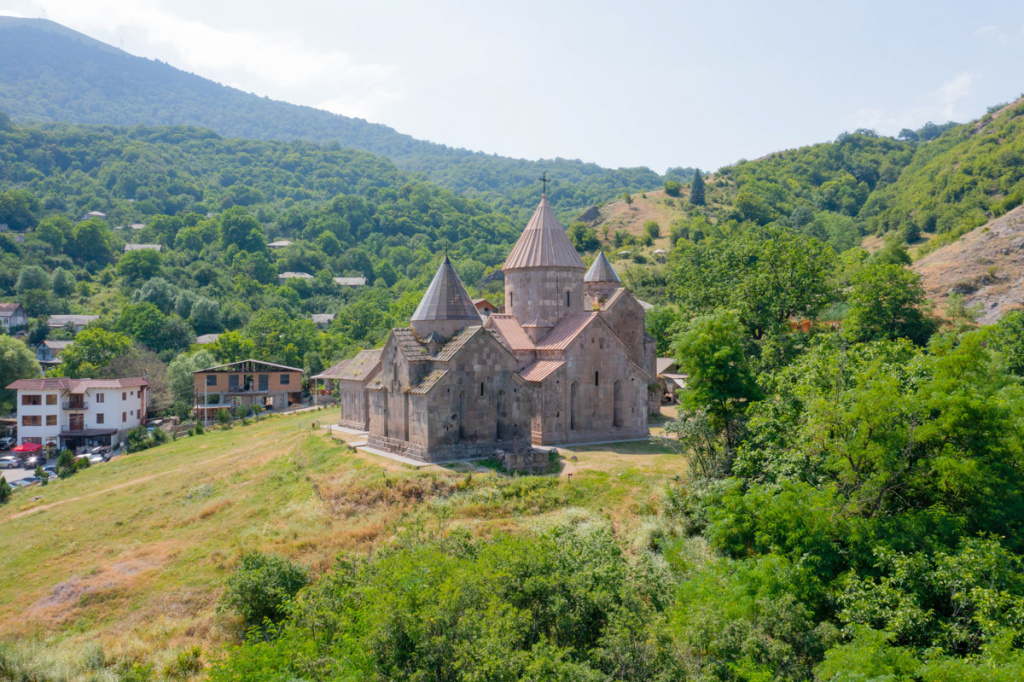
The medieval monastery complex of Goshavank is another remarkable specimen of the medieval temple architecture of Armenia. It is located in the center of Gosh village, in the picturesque Tandzut gorge. The complex is built on a high plateau, not far from the confluence of the Aghstev and Getik rivers, and as if it rises above the gorge.
"This ensemble is a single whole with the surrounding nature, it also represents the creative genius of medieval architects who knew how to make excellent use of the landscape of the area," the authors of the book "Historical and architectural monuments of Dilijan" claim.
In the XII century, the outstanding Armenian thinker, philosopher, and jurist Mkhitar Gosh founded Nor Getik (New Getik) monastery on the site of an older Getik temple destroyed by an earthquake. In 1213 after the death of Mkhitar Gosh, the monastery was named Goshavank (translated as "Gosh Monastery").
Mkhitar Gosh was buried near the monastery complex he built. Having completed the construction of the church and the narthex, Gosh built a small chapel for himself, next to which, according to the testimony of Kirakos Gandzaketsi, he was buried. This small chapel is traditionally considered to be the thinker's tomb.
The monastery complex of Goshavank includes the churches of the Holy Mother of God (1191-1196), the narthex (1202-1203), the church of St. Gregory (1234), the church of St. Gregory the Illuminator (1237), as well as three chapels, bell towers, seminaries and a book depository (1241 - 1291).
The main church of the monastery complex is the Church of the Holy Mother of God (Surb Astvatsatsin) built in 1191-1196, which has a typical cross-domed structure with an altar apse in the eastern part. The church was built from local stone with a pink tint.
“The outer walls of the church are smooth, on the southern and eastern walls, there are small decorative triangular niches. A wide band runs along the upper part of the drum, filled with complex geometric relief ornament. A lavishly decorated portal into the western wall connects the church with the narthex.”
The monastery complex of Goshavank was not just a spiritual, but also an educational center of medieval Armenia. It was an actual university where philosophy, theology, music, and other sciences were taught. Prominent cultural figures of Armenia Vanakan Vardapet and Kirakos Gandzaketsi studied and lived here.
Jukhtakvank monastery complex
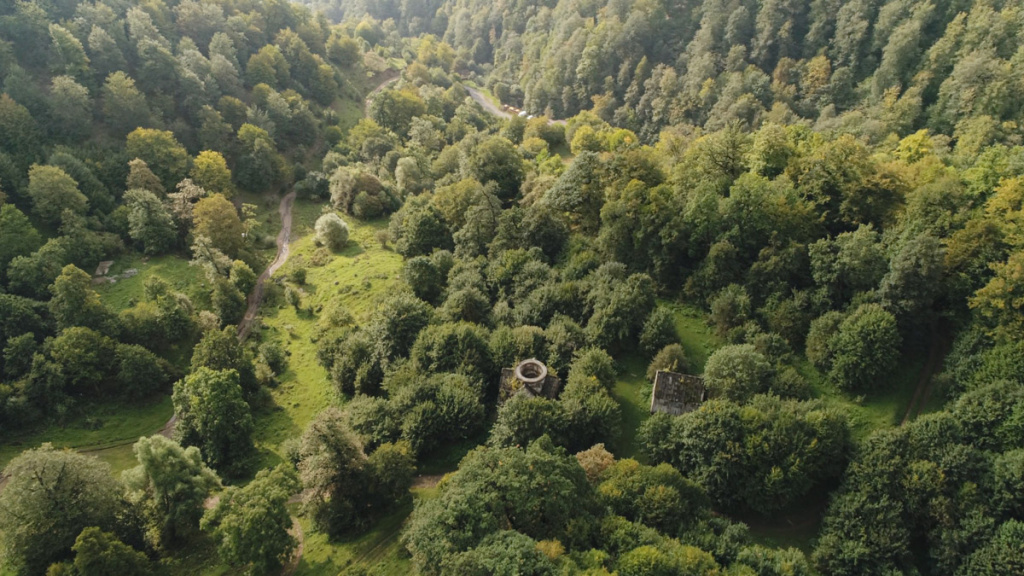
This and subsequent monastery complexes, which we will describe below, cannot boast the same popularity among tourists as Haghartsin or Goshavank. But this doesn’t diminish their historical and aesthetic value, but rather the opposite it awakens even greater tourist and research interest in them. After all, not much information is kept about these temples.
Unfortunately, at present, Jukhtakvank and Aghavnavank are in a dilapidated state, and the Matosovank complex is in ruins.
Jukhtakvank (Jukhtak) is located 3 km west of Dilijan, on a mountain slope, between small tributaries of the Aghstev River.
The monastery complex consists of two churches, the Holy Mother of God (1201) and St. Gregory. That is why people called the complex "jukhtakavank", in translation – "paired temple". The monastery is referred to as Gisheravank (night monastery) in some sources.
“In the inscriptions preserved on the walls of the churches, the ancient names of the monastery are mentioned, in one inscription as Petrosi vank (Temple of Peter, ed.), in the other as Gisheravank.”
The Church of the Holy Mother of God (Surb Astvatsatsin) is the western building of the monastery complex. The walls of the church are decorated with inscriptions, one of them with the name Sarkis, the builder of the church.
“The church is rectangular both outside and inside. It’s without columns and a dome. In its shape, it resembles a single-nave basilica with a vaulted ceiling and a gable roof over it, with a beautiful cornice. In the eastern part, there is an altar and two small tabernacles with windows. The floor and roof are covered with stone slabs. The only entrance is on the west side”.
The Church of St. Gregory is located 20 meters farther east of the Church of the Holy Mother of God and is a small central-domed structure distinguished by skillful stone carvings and bas-reliefs. Probably, the church was built somewhat earlier than the Church of the Holy Mother of God.
Near the church, there are several medieval khachkars decorated with fine carvings. There is also a small medieval burial ground.
Aghavnavank monastery complex
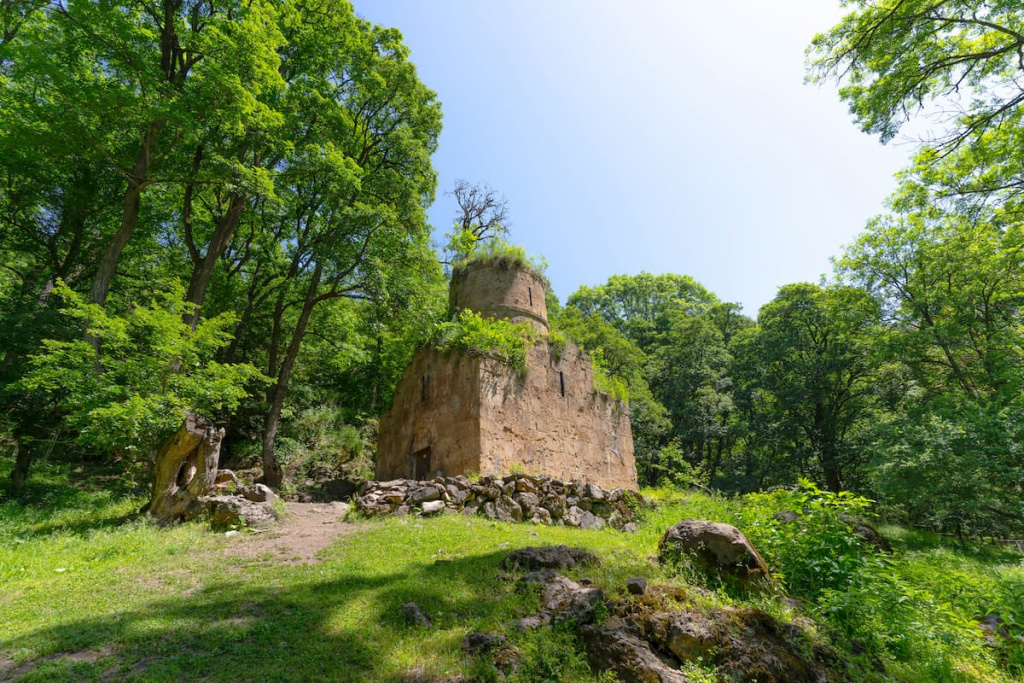
The monastery complex of Aghavnavank is located near the village of the same name, in the heart of a yew grove. There is little information available about this complex. It is known that it was built approximately in the XII-XIII centuries and is a classic example of Armenian church architecture.
Unfortunately, time didn’t spare Aghavnavank. The temple is located on a slope of low-lying cliffs and has been exposed to winds for centuries. Its walls are overgrown with moss, and the dome is almost destroyed and overgrown with greenery.
The church is a small central-domed structure with vaults, distinguished by the yellowish color of a rare stone. On the western facades of the sacristy, there are traces of carvings with ornaments and fonts typical for the High Middle Ages. There are ruins of many buildings to the south of the temple, probably former cells and household buildings of the church parish.
Aghavnavank is translated from Armenian as "temple of doves". The unique, light color of the stone from which the temple was made, and the surrounding landscape really create a peaceful and calm atmosphere, matching the "temple of doves".
The church is located in a yew grove, a unique forest in Dilijan National Park. Some of the trees in the yew grove are about 400 years old. Let alone the monastery complex, which is much older.
Matosavank monastery complex
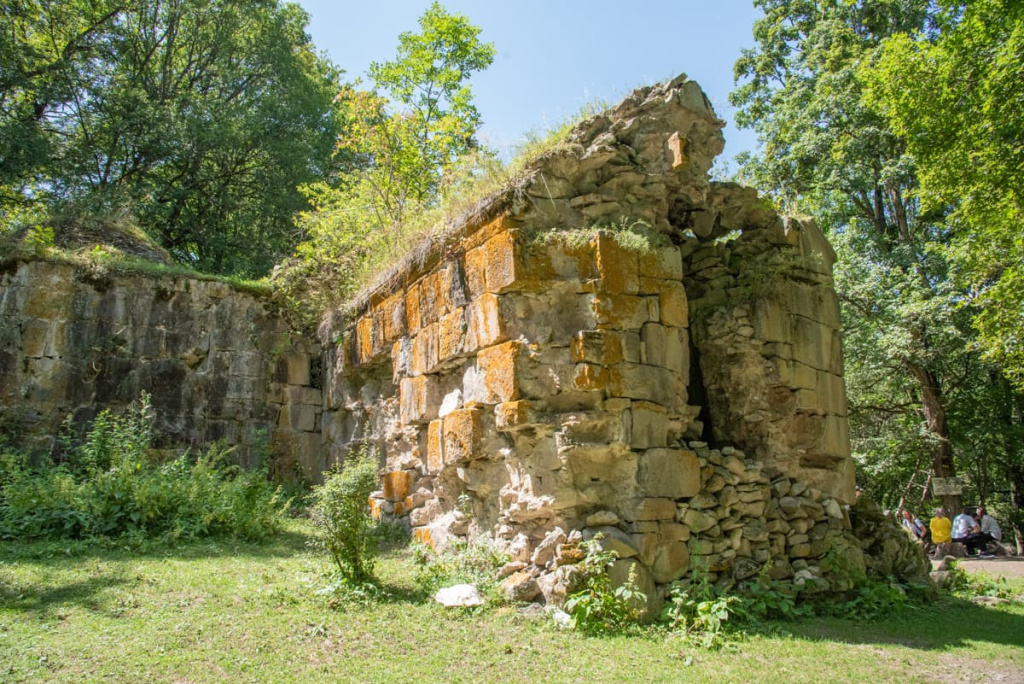
The monastery complex of Matosavank is located opposite Jukhtakvank, on a forested slope 3.5 km west of Dilijan.
The complex consists of three small buildings adjacent to each other, the Church of the Holy Mother of God, the narthex, and the book depository.
The Church of the Holy Mother of God (Surb Astvatsatsin) was built in 1205 and is a small structure covered with a vault. Two khachkars have been preserved on both sides of the entrance. Under the wall of the church, in the northern part, there is another skillfully made khachkar dating back to 1251.
The narthex and the book depository also have a vault-roofing. The exact date of their foundation is unknown.
To date, the interior walls of the temple are completely covered with moss. The collapsed dome is missing. For 800 years of its existence, the temple is so blended with its surroundings that tourists may just fail to notice it.
Any other questions?
Our specialists will contact you as soon as possible




